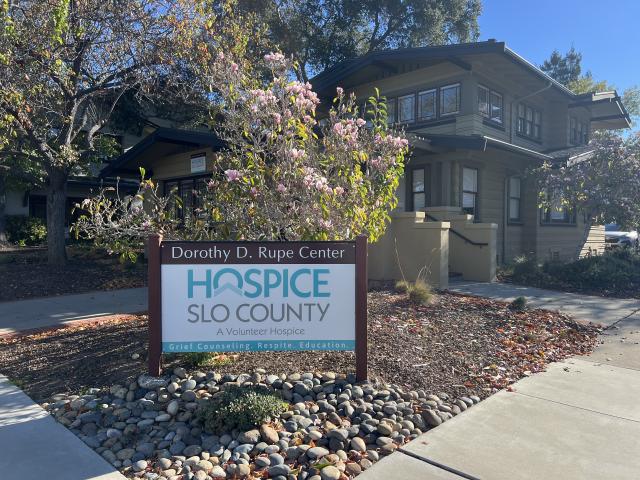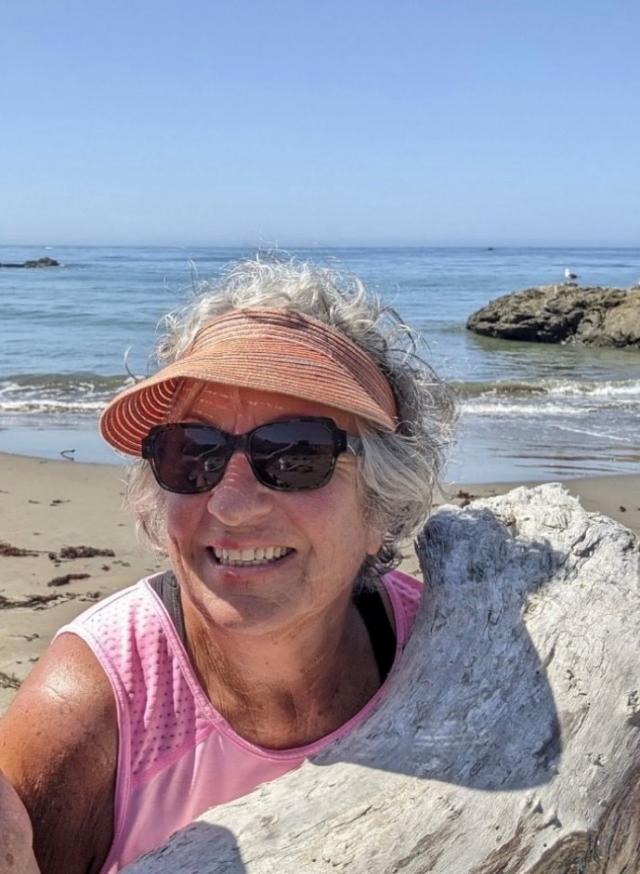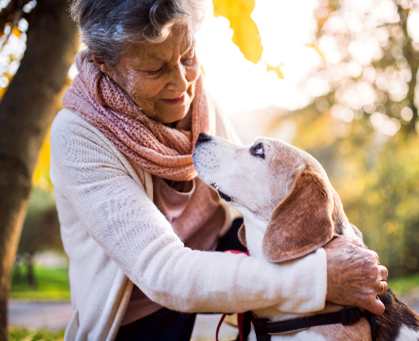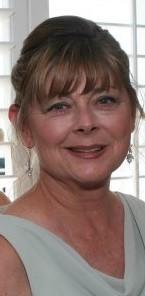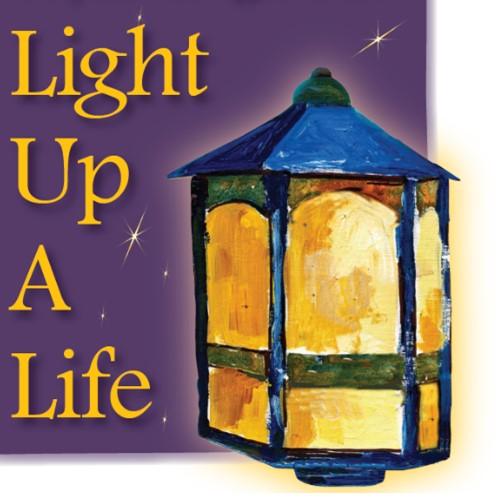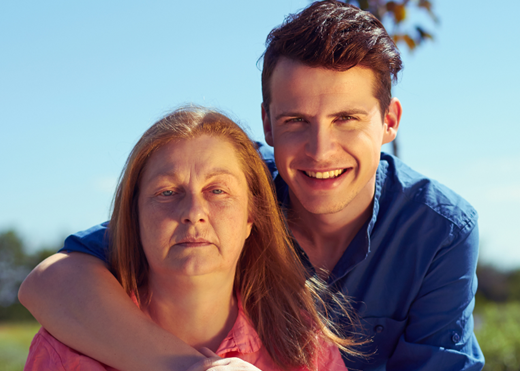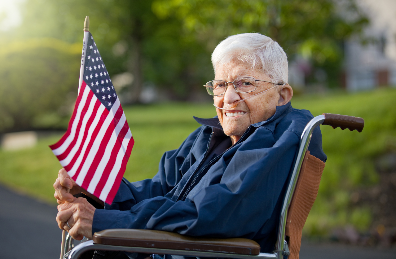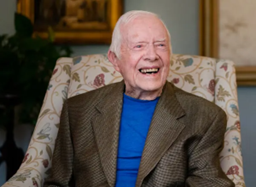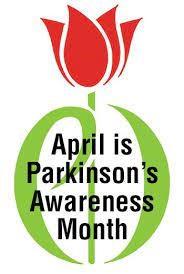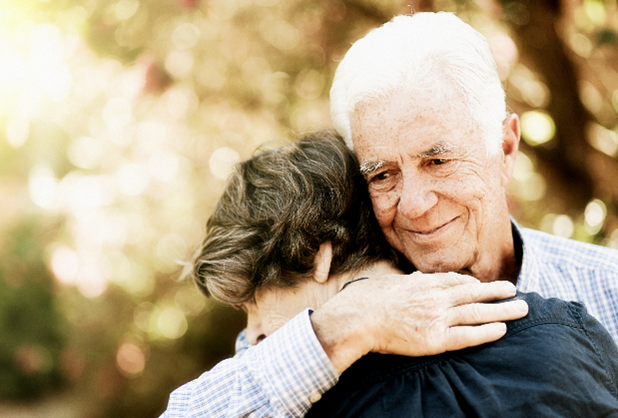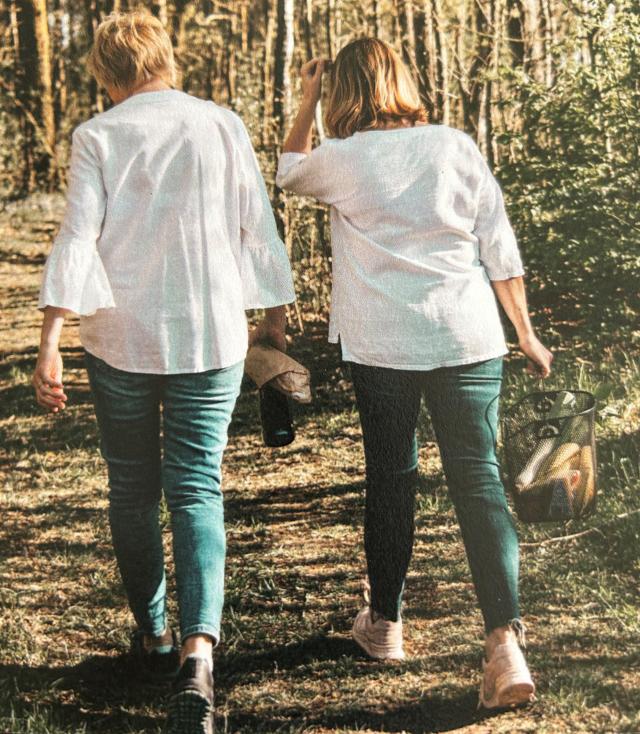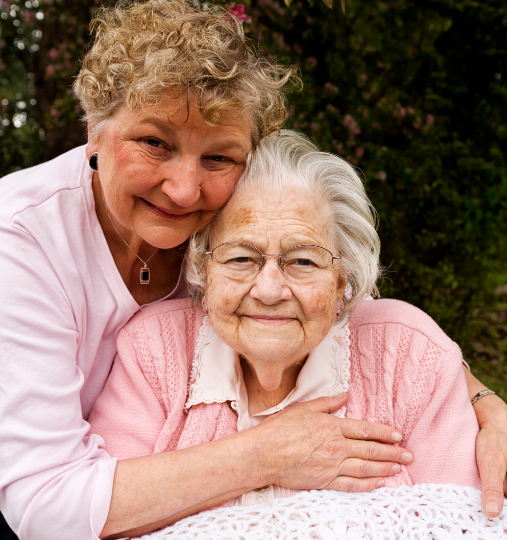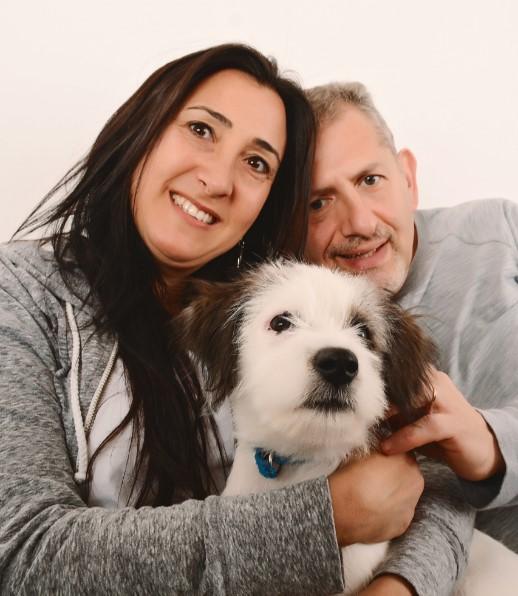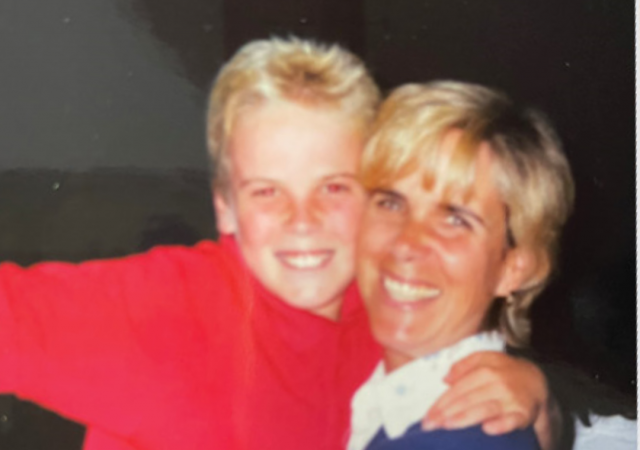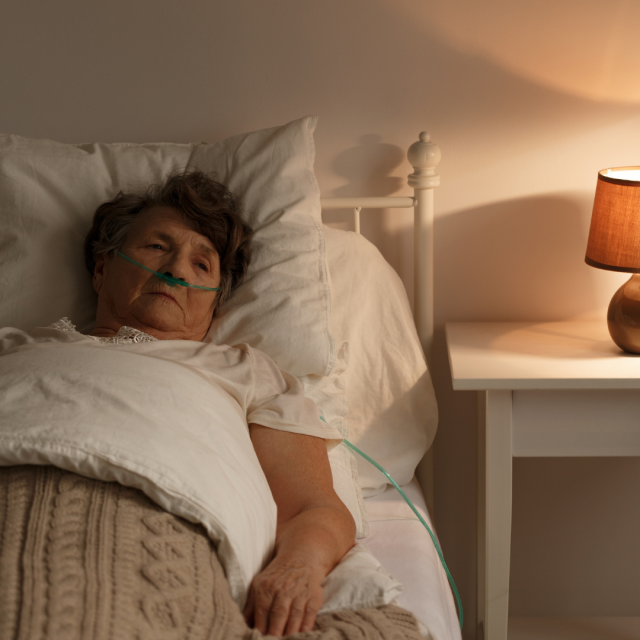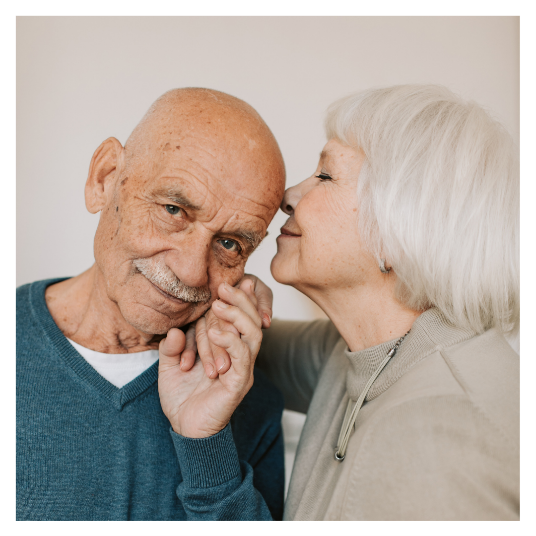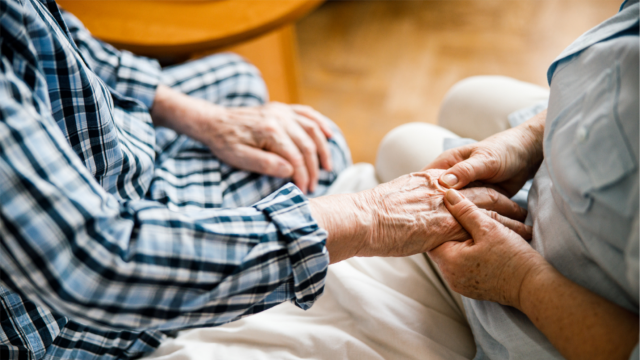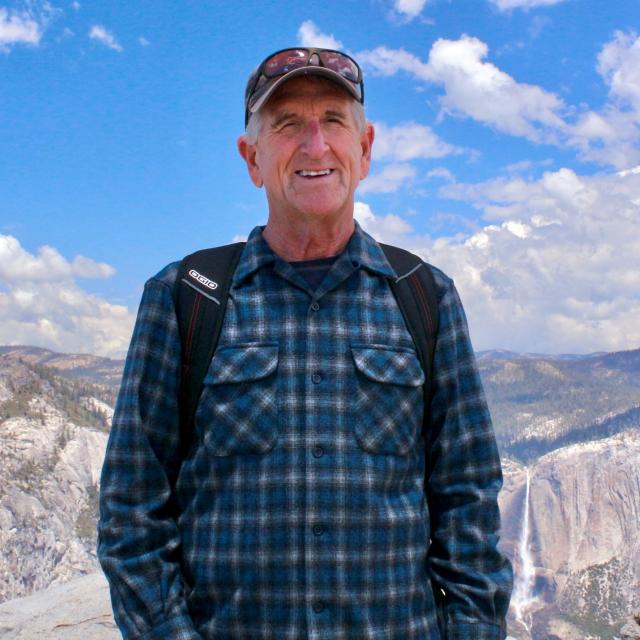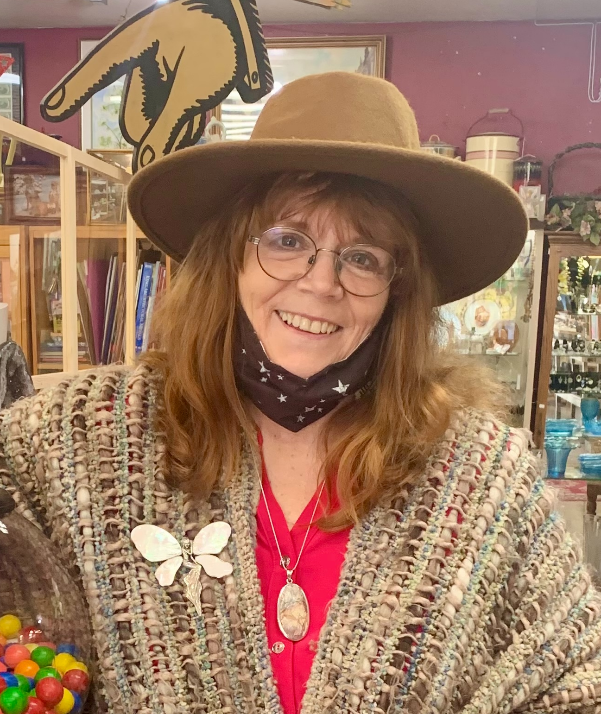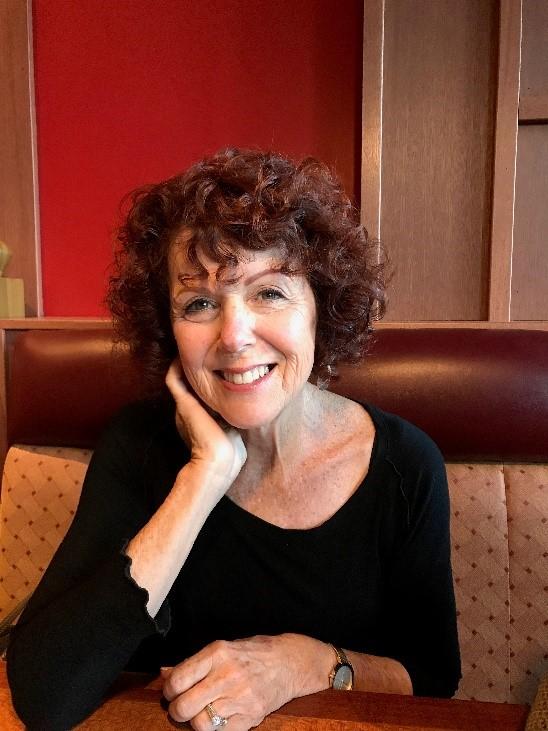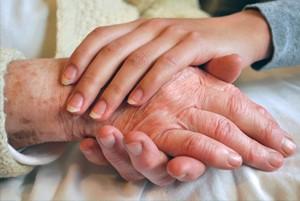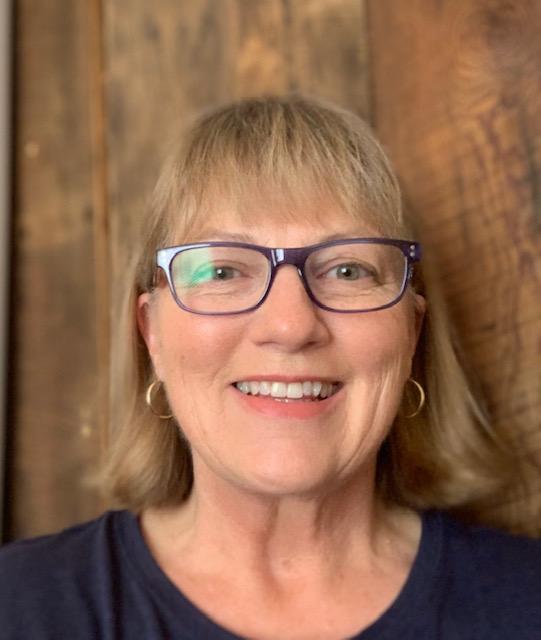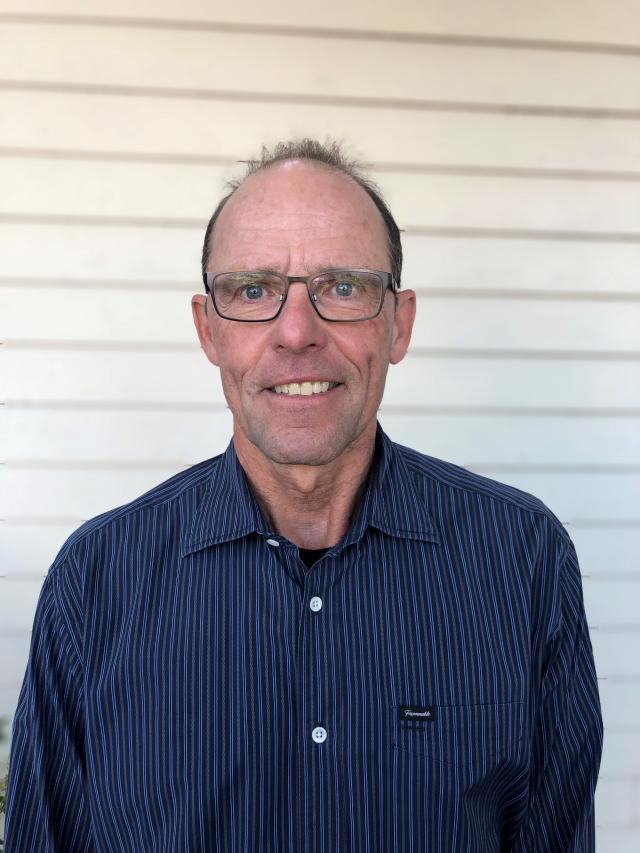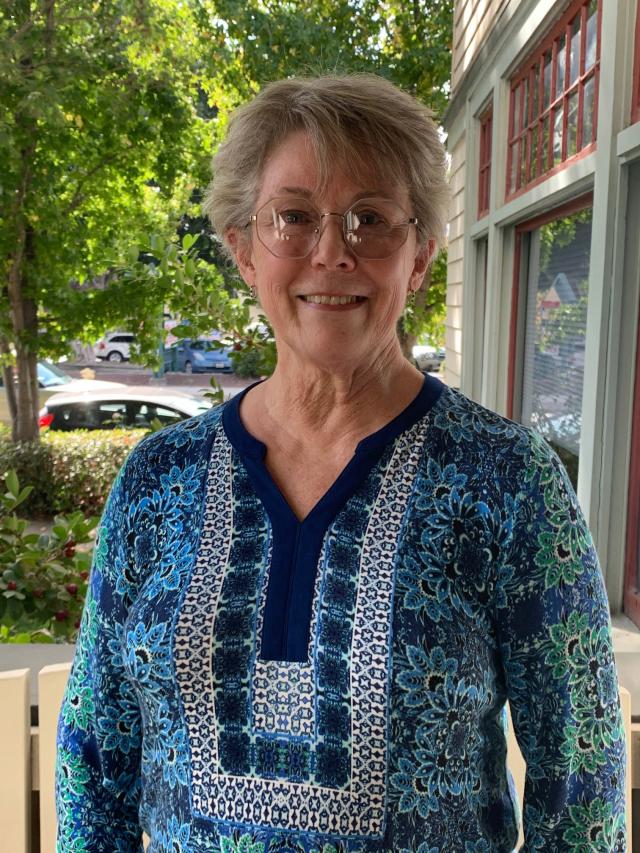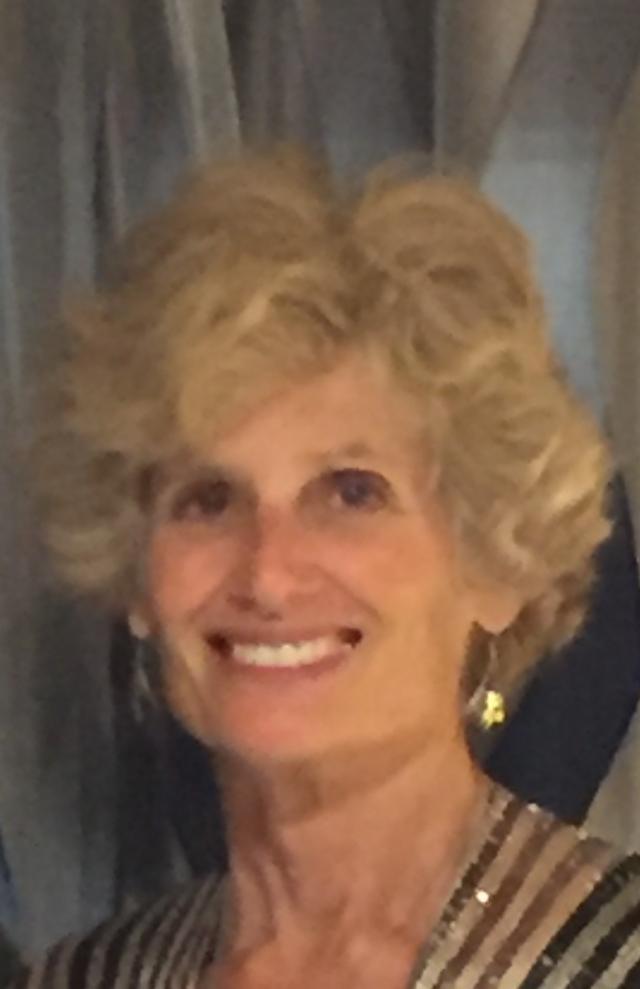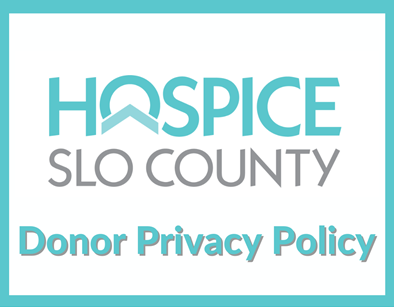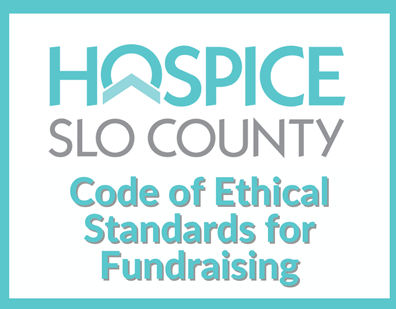Hospice SLO County Blogs
November 2025
We’re excited to share an important update about the future of Hospice of San Luis Obispo County.
After nearly 25 years at our Pacific Street location, we have moved just one block away (in the same parking lot) to a smaller, more visible historic home. Our new location at 1305 Marsh Street will continue to be called The Dorothy D. Rupe Center, honoring the generosity that made our long-time home possible.
While the building is smaller, this move allows us to reduce our annual operating and maintenance costs to help strengthen our long-term sustainability while still offering a welcoming space that supports the incredible work our staff and volunteers do every day.
While our address has changed, our mission remains the same: to provide compassionate, volunteer-driven hospice and grief support free of charge to individuals and families across San Luis Obispo County.
For almost five decades, Hospice SLO County has been a place of comfort, dignity, and connection for our community. This move allows us to strengthen our foundation for the future—ensuring that we can continue offering free hospice and grief support services to residents of San Luis Obispo County for decades to come.
Hospice SLO County remains financially stable, and this decision represents thoughtful planning for the organization’s future.
“The new Dorothy D. Rupe Center honors our past while ensuring a sustainable path forward,” said Abe Lincoln, Board Chair of Hospice SLO County. “This is not just a change of address—it’s a reaffirmation of our mission and our deep commitment to serving this community.”
About Hospice of San Luis Obispo County
Founded in 1977, Hospice of San Luis Obispo County is a non-medical volunteer hospice and grief support organization providing services at no cost to residents of San Luis Obispo County. Guided by the belief that no one should face life’s final chapters—or the grief that follows—alone, Hospice SLO County offers in-home support, caregiver respite, grief counseling, support groups, and community education. As one of only 14 remaining volunteer hospices in the United States, its mission is sustained entirely through community donations, grants, and volunteer service.
When most people hear the word “hospice,” they automatically assume that it’s only for people who are about to die. Did you know that concept is not accurate at all? While hospice can be specialty care for those with a terminal illness, it’s also a term that implies “hospitality,” but few currently know that.
According to the Merriam-Webster dictionary, the word “hospice” comes from French and Latin and means “lodging for travels (denoting hospitality), young persons, or the underprivileged, especially when maintained by a religious order.” The word was first used regularly in this context in 1818.
While Hospice SLO County is not a religious order, we have been the keepers of the idea of hospice as a place of nurture since 1977. We don’t provide lodging, but we do provide non-medical assistance long before a person has a terminal illness through in-home respite provided by trained community volunteers and a grief counseling program for anyone who has experienced loss due to death (or who is facing significant loss).
We continually need clarification about medical hospice because the original meaning of hospice has changed in the 207 years since it was first used to describe a type of hospitality. Because of this, people tend not to call us until they perceive they or their loved one is at the end of their life.
We are one of only 17 non-medical, volunteer hospices left in the U.S. Before 1982, all hospices were modeled on the non-medical, volunteer foundation until Medicare and other insurers decided to pay for medical-based end-of-life care.
Our community is fortunate to have this free resource available to anyone living in SLO County. Give us a call to see how we might be able to offer you “hospice” on your journey.
Learn more about the History and Philosophy of Volunteer Hospices in the United States and the difference between a Volunteer vs Medically Certified Hospice.
San Luis Obispo County is fortunate to be home to one of the country's 17 remaining non-medical volunteer hospices. With its unique range of services, Hospice SLO County is a beacon of support for members of our community.
Many people mistakenly believe that hospice services are only available at the very end of life. However, our team at Hospice SLO County provides comprehensive care and support to individuals and their families throughout the entire journey.
Take the story of Sharon* and her husband, Greg*. In 2016, Sharon had to stop working at her successful business because Greg's serious heart condition and other chronic diseases had left him homebound. Seeking help, Sharon reached out to Hospice SLO County.
For Barbara and Peter, life was once filled with shared adventures and cherished moments. However, three years ago, Barbara began noticing unsettling changes in Peter's mood and behavior, particularly in unfamiliar settings or when pursuing his beloved woodworking. After consulting a neurologist, Peter received a diagnosis that would forever alter the course of their lives together: Parkinson's Dementia.
Opening my heart to learn about death and working with those in situations that require support has deeply enriched my life. My Hospice SLO County training, which was concurrent with my retirement and entrance into the decade of my 70s, put me in a space to visualize what my feelings about death and preparation for death were. It is not always easy, but it is so fulfilling to my whole self; so much growth and change.
Have you encountered the term "care management"? If you've been in the hospital, you may have heard of this or "case management." You might have worked with a care manager to assist in transitioning from the hospital to your home or a facility.
But who helps you with resources and care navigation once you are at home, especially if you or your loved one has a chronic illness?
A community care manager is a nurse or social worker with special training and education in helping people plug into various agencies and access resources in the community setting. A care manager can provide you with a plan for current and future needs and stay in communication over time to help prevent unnecessary hospitalization or medical intervention. They can also help you determine when to take advantage of other special services or health care.
If you have ever struggled to understand what your health practitioners suggest or if you feel confused about care options and community resources, a care manager might be a great option to help you, and your loved ones receive guidance, insight, and facilitation for access to care.
Most care managers are independent unless they are part of your insurance coverage. Insurer-provided care managers usually live outside the area. Their general guidance and resources may not be specific to your community. That usually leaves people paying $75 to $150 per hour for care management, which few can afford.
Thanks to the generous support of the Arthur N. Rupe Foundation, SLO County is very fortunate to have free community care management through Hospice SLO County. This service is funded explicitly for those who are caring for loved ones with dementia, but anyone facing serious illness can receive it.

Our care manager can listen carefully, guide you to appropriate support (including our own in-home respite, grief counseling, and support group programs), and provide regular in-person or telephonic follow-up and care planning. This service is essential for anyone navigating the choppy waters of being a family caregiver or for anyone navigating chronic health issues.
If you feel you could benefit from our Care Management support, please reach out to Kim Chartrand at 805-544-2266 or [email protected].
When Laura's* mom, Roberta*, suffered a stroke, their lives changed in an instant. Roberta, who had lived independently for decades, could no longer return to her rural home after being discharged from the hospital. She moved in with Laura, and the family rallied around - but not everyone could keep their promises of support.
Charles* was once a prolific artist in his community. However, after being hit by COVID and other chronic health issues, he started to notice that important things in his life were slipping away, and he wasn't eating regularly.
Upon realizing his condition, his home health nurse referred him to Hospice SLO County. Our Volunteer Manager arranged a meeting with Charles and our Care Manager. After discussing his situation, Charles agreed that an in-home volunteer could help with essential tasks such as organizing, running errands, and meal preparation.
Gloria* is a 95-year-old woman who lives independently in a small house by the coast. Her dog is her constant companion, and her daughter Angie* lives nearby.
Initially, Angie was concerned that working with Hospice SLO County meant her mother was dying, but this was not the case. Our Volunteer Services Manager explained that since Hospice SLO County is non-medical and volunteer-based, we could support Gloria with companionship and socialization and assign a Pet Peace of Mind volunteer to help her care for her dog.
My road to Hospice SLO County unknowingly began in late 2009 when my mom, Vicky Taylor, died of cancer just five weeks after I gave birth to my first child. We had hospice support for about a month and had a beautiful experience. I say “we” because the support was not just for my mom, but also for our entire family. After her passing, I found that being a new mom left me with little time or energy to process her death or grieve.
Often, images of winter holidays seen on television, in movies, and in advertising show happy people celebrating their traditions with their loved ones. But what if a loved one has died? Incorporating loved ones who are no longer living into holiday traditions was the basis for Hospice SLO County's first Light Up A Life remembrance ceremony.
"Coping with my mom's frontotemporal dementia is difficult. Hospice SLO County helped me find services and a caregiver support group."
John*, who was previously unhoused, contacted Hospice SLO County just after VASH (Veteran’s Affairs for Supportive Housing) found him a safe place to live. John lived alone in his new home, and he was unable to run errands or stand for long periods due to his congestive heart disease.
On May 2, 2023, employees and incarcerated workers from the California Men’s Colony (CMC) California Prison Industry Authority (CALPIA) presented Hospice SLO County with a donation of $2,560.
In late February, 2023, Former President Jimmy Carter made an announcement that he had "decided to spend his remaining time at home with his family and receive hospice care instead of additional medical intervention."
Bruce Willis' loved ones shared that the actor has a Frontotemporal Dementia (FTD) diagnosis. FTD can cause problems with speech, emotion, motor skills, gait, swallowing, and can cause personality changes. These symptoms tend to worsen over time. FTD is the most common form of dementia for people under 60. Bruce Willis' family shared that this is a challenging time for them but they are moving through it as a strong family unit focused on helping Bruce live as full a life as possible. They continue to keep him active every day and make sure both his body and brain are exercised.
Nearly one million Americans live with Parkinson’s disease. Approximately 90,000 are diagnosed each year, or one every six minutes.
Mike* began to notice Cathy stumbling and forgetting appointments. After a medical evaluation, Cathy was diagnosed with Frontotemporal Dementia.
Maria was overwhelmed trying to help Jim and also walk their dog Chester, an 8-year-old golden retriever. Their adult children were so busy with work and kids that they couldn’t walk Chester as often as was needed either. Hospice SLO County’s volunteer coordinator mentioned that perhaps one of our “Pet Peace of Mind” volunteers could help. Jim reluctantly agreed and Maria was thrilled.
Hospice SLO County helped me care for my wife who was living with dementia.
“I’m alive today because of my end-of-life Doula, Karen,” Kelly* said to me recently. “We share a very strong bond.” Kelly, who was first diagnosed with breast cancer in 2007 and then suffered from two malignant brain tumors in the past six years, was referring to her volunteer doula from Hospice SLO County...
Bill has been caring for his wife, Laura, who was diagnosed with dementia five years ago. Laura is now at the point where it is not safe for her to be left alone. Bill cannot take a break from caregiving and has no time to take care of his medical needs...
Esther was in her 90s and had lived independently until last December when she contracted COVID-19. While she recovered, she was weaker than before and seemed prone to more illness. Her daughter Sue* was spending more and more time with her mom and having to help her with more of her activities of daily living...
Your gift makes a difference in so many lives, including Laurie and David's.
Laurie works full time as the sole family provider and her husband David is undergoing treatments for cancer. David is often too weak to get out. One of our Hospice SLO County volunteers visits with him 1-2 times a week and calls in between times to provide companionship and practical help when Laurie is at work...
Many of our clients are elderly, on a fixed income, and live alone. For them, navigating finances and insurance can be challenging. At Hospice SLO County, we take away finance and insurance worries by offering our services free of charge. One phone call is all it takes to receive a plethora of support.
Faith*, a widow with dementia, utilizes our In-Home and Pet Peace of Mind programs. She also receives Care Management assistance. Faith would not be able to afford these services from a private contractor...
In 2012, I experienced a loss that no parent should ever have to endure – the death of my beloved son Zachary. Zachary was a kind, loving, bundle of energy, who brought so much joy to those around him. But he struggled with mental illness and when he was 20 years old, he decided to end his life. In the months after Zachary died, I had no idea what to do. The support of my friends, family, and church brought great comfort and relief, but I didn’t know how to process my grief and I knew I wasn’t heading in a good direction...
Stella* resided in an assisted living facility when her health issues worsened and became terminal. Her doctor prescribed hospice care. She remained at the facility in familiar surroundings, with medical hospice providing comfort-focused care, equipment, and supplies to address the hospice diagnosis. The assisted living facility continued to provide non-hospice-related services...
Jim and Donna were married 42 years when they learned he had cancer. The diagnosis left them reeling. Treatment was recommended to start immediately...
February 4th is observed internationally as “World Cancer Day” to raise awareness of cancer symptoms, treatments, and advocacy. But what is often overlooked is the day-to-day experience of a cancer diagnosis: the shock of the initial diagnosis, the overwhelm of treatments, the unknown, the questions, and the physical and emotional support needed...
When Caroline first heard about Hospice SLO County in 2018, she wasn’t sure what to think. Her husband, Russell, had recently undergone hip replacement surgery and it was becoming clear that he would be wheelchair-bound moving forward. Until then, she had only ever thought of hospice as end-of-life care. Realizing the resources and support that were available even in the midst of Russell’s life-limiting illness changed everything...
At a December 2017 visit with his cardiologist to begin treating his peripheral artery disease, the doctor told my husband and me that a mass was seen on the CT scan he had ordered. That was news I did not expect to hear. We visited the Pulmonologist for a diagnosis (stage IV lung cancer) and then the Oncologist. Soon we added a Radiation Oncologist to the team...
In 2018, I challenged myself to engage in an area of volunteer service that was outside my comfort zone. I enrolled as a volunteer with Hospice SLO County and received 30 hours of expert training in the methods and skills to serve in-home clients with terminal or severely life-limiting conditions. The excellent weekly sessions with over a dozen other trainees gradually built my confidence to the point that I felt I could support someone in need...
I remember the day I realized my beloved husband Bob had dementia. He turned to me and asked, “Where’s the brake on this car?” ...
Twenty five years ago, I got a phone call that changed my life. It was a call telling me that my husband had died while he was away on a golfing trip. I was only fifty-two at the time and never thought that something like this would happen. At first I was surrounded by family and friends so I was distracted from the numbness and grief that I felt. After the funeral, my support group began to fade as each of them returned to their jobs and families...
I am moved by the gratitude of the caregivers for what seems to be so little for me to give.
“Educating about end of life care and how each of us owes it not only to ourselves but also to our loved ones to make sure our wishes are thought out, expressed, and documented is a passion for me. Hospice SLO County offers assistance with accessing, understanding and completing Advance Healthcare Directives and POLST without charge. If you have an interest in getting started on the conversation, call (805) 544-2266.”
"You will not find a more worthy organization that holds up your community in the very worst of times at no charge to anyone, ever".
Hospice Threshold Singers has been a saving grace in my life. The group continues to grow under Ruth Baile’s compassionate, encouraging, committed leadership giving all of us a chance to sing at the bedside of people and pets on the threshold of their lives.
Concentrate on living in the moment every day rather than thinking your life may be coming to an end soon. Celebrate each day by doing something that brings you joy. Plan activities for the upcoming weeks and note your plans on your calendar. My doctors predicted I had about two months to live. That was nine months ago, and I am still enjoying my dream of being a writer.
As a Trauma/General Surgeon I’ve encountered many people near the end of their lives. I saw many deaths from tragedies. I am always amazed by how few people and their families are prepared for end-of-life issues. I saw how many people debilitated by disease and infirmity have exhausted their caregivers. I discovered how frequently getting sick and hospitalized led to a transition to a nursing home rather than going home because there just weren’t enough resources so that the patient could go back home.
For one year now I have given my time as an In-Home Volunteer with Hospice SLO. We focus on providing emotional comfort and companionship to our client, and respite care for the caregiver. I know personally that we as End-Of-Life Doulas make a difference to our client and to the family members. Recently one of my clients died and while I talked to her husband afterwards he expressed his thanks for knowing there was someone else who knew his wife, who cared about her, who sat beside her, and also was there for him as he needed to talk about her and his future without her.
"Hospice SLO County has made my disability much less impacting to me. It has freed me up to do other things that I can do and allowed me to have more energy to enjoy my life. It is a bright spot amongst my challenges" said Denise.





